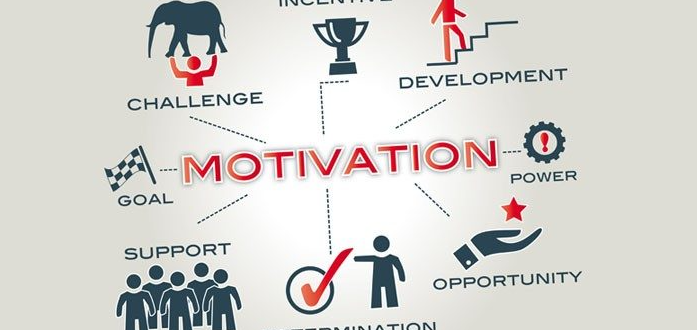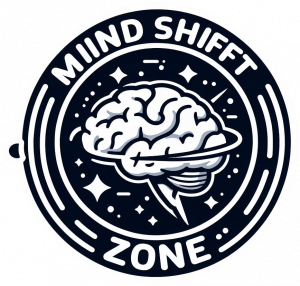There are many theories of motivation that can be used to explain why some individuals are driven to succeed. Motivating employees can be challenging; sometimes it is one of the most difficult aspects of management. Because motivation is so important, it is also widely researched. Here we will look at three theories of motivation and how to apply the practices in the workplace.
Theories of Motivation – Maslow’s Hierarchy of Needs
Perhaps one of the most popular theories of motivation was created by Abraham Maslow, a New York psychologist who practised in the mid-20th century. The Hierarchy of Needs is an idea that explains motivation through an order of which your needs should be satisfied. If the need on the bottom of the hierarchy is not satisfied, then it is impossible to move to the next level on the hierarchy, and the dissatisfaction of these needs is what motivates us to act in the direction of what will satisfy them.
This is what it looks like: Maslow’s Hierarchy of Needs
On the bottom, there are the physiological needs that are basic to survival such as food, water, warmth, or rest. Maslow’s would say that if these conditions are not met, then there is no way to fulfil safety, belongingness, esteem, or self-fulfillment needs.
In a career setting, this includes having restrooms, water fountains, a reasonable lunch break, and other services that are vital to a livable work environment. If employees are worried about how they are going to find their next meal, it is hard to focus on the tasks of their job.
According to Maslow, if you are starving and cannot provide food for yourself, then your first concern would not be to find a safe and secure home. That is why the next step on the hierarchy includes safety needs.
When physiological needs are taken care of, we become motivated to find protection and security. This could include the desire to live in a safe neighbourhood, having an employee safety program, or security that prevents unauthorized patrons from entering the building.
You could also fit job security into this category: if your employees are anxious about getting laid off or budget cuts, it is harder for them to feel motivated to reach their highest potential because there are security barriers that come first.
The love and belonging level of the hierarchy concerns having relationships and a sense of community. Positive relationships in our career are also a big motivator that allow employees to be engaged in the company. Some examples to foster these relationships at work would include outside-the-office social activities or team projects.
Moving up the hierarchy we have esteem. This can be divided into two categories: lower esteem needs and higher esteem needs. Lower esteem needs include things that come from external sources such as status, fame, reputation, or dominance. If you are motivated to get recognition from your boss, or for your company to earn a prestigious award, you are motivated by lower esteem needs.
Contrarily, higher esteem needs include things like self-confidence, self-respect, competence, or achievement. These are considered “higher” because when you have internal feelings of self-esteem, they are harder to lose. Esteem can be a factor that someone has that motivates them to do their best, or it can be something to strive for.
Feedback (both positive and negative), encouragement, and recognition are great ways to help employees strengthen self-belief.
Finally, Maslow’s is one of many theories of motivation that identifies the top level of the hierarchy as self-actualization. Maslow writes in A Theory of Human Motivation, “even if all these needs are satisfied, we may still often (if not always) expect that a new discontent and restlessness will soon develop unless the individual is doing what he is fitted for. A musician must make music, an artist must paint, a poet must write if he is to be ultimately happy. What a man can be, he must be. This need we may call self-actualization.”
Maslow is saying that we want to feel the best we can in our current situation. Maximising our potential, according to Maslow, is only possible if we have all other needs met.
Maslow’s research concludes that self-actualization comes with many other qualities such as autonomy, comfort in solitude, deep personal relationships, reality-centred, spontaneity, simplicity, creativity, and humility.
Employers can help their employees maximise their potential by understanding the needs of the individual person and investing in their growth. This will encourage positive attitudes and employee engagement, and in turn, boost productivity.
Maslow’s theory of motivation can be applied in all areas of professional life. When you are safe, supported, surrounded by community, and confident in yourself, work is more satisfying and fulfilling. Overall, Maslow insists that fulfilment comes from having these needs met from the bottom up, which will allow us a chance to pursue self-actualization.
Theories of Motivation – Vroom’s Expectancy
Vroom’s theory of motivation assumes that behaviour comes from choices that we make and that these choices maximize pleasure and minimize pain. This theory suggests that an employee’s individual performance is based on their personality, skills, knowledge, experience, and abilities.
Even though your employees will have different career goals, Vroom’s idea says that their motivation is based on these three things: expectancy, instrumentality, and valence.
Expectancy is how the individual perceives the relationship between their effort and performance. If an employee believes that more effort will certainly lead to better performance, then expectancy is high, and vice versa. For example, if a salesperson works tirelessly with his or her clients, expending a high level of effort, then he or she will probably expect to have great sales results.
Instrumentality is how the individual perceives the relationship between their performance and a given outcome. If good performance certainly leads to a given outcome, then instrumentality is high. To take the same sales example, if a salesperson knows for certain that meeting a certain quota will award him or her with a salary bonus, then instrumentality is high. On the contrary, if there is no reward given for good performance, then instrumentality is low.
Valence is how the individual values a particular outcome or reward. If the salesperson believes that the bonus is valuable and worthwhile, then valence is positive. There may also be cases where an individual views an outcome negatively or with indifference.
Vroom’s theory measures these assumptions quantitatively. Expectancy and instrumentality are ranked on a scale of 0 to 1. If there is a very positive relationship between effort and performance- meaning that more effort generally produces better performance- then expectancy might have a value that is close to 1, such as 0.85. Likewise for instrumentality, if good performance is very likely to produce a given outcome, then the value for instrumentality is close to 1. Valence, on the other hand, is either positive, negative, or zero.
Then, you can calculate motivation using this equation:
motivation = expectancy x instrumentality x valence
What is important to note is that if any of the three factors are 0, then motivation is 0. When any of the three factors are low, then motivation is also low.
Leaders can use Vroom’s expectancy theory to help their employees stay motivated and increase performance. When employees feel that they are capable of performing well, they will put more effort into their work. This involves clearly defining expectations and making their desired outcomes attainable.
Make them feel confident and comfortable in their work environment by providing resources and assistance, providing a corporate coach or teaching self-coaching methods, or show them examples of other success stories. Then provide feedback for a job well done.
Effort is based on how the individual perceives the relationships between effort, performance, and outcomes, and it is the employer’s job to define that relationship. For someone in sales or anyone who works on commission, this may be very clear by nature. If you put a lot of effort into working with clients, you are likely to have better sales results, which clearly produces a higher salary outcome.
However, if you are managing a team of employees who do not understand how their effort can drive performance, or how their performance will produce results that matter to the individual, then they might not be motivated to put in effort. It is up to the employer to demonstrate clearly how effort can impact outcomes. It is up to the employer to help the employee ‘find the why‘ behind their work.
It is also important that effort and performance provide outcomes that the individual values. Not everyone places the same value on salary or promotions, though these can be great motivators for some. Some employees would prefer to have better benefits, more vacation days, the ability to work from home, or the chance to contribute to an important project. Also, because valence can be a negative factor, it is important to eliminate undesirable rewards. All of these things rely on the individual’s perspective, so it is important to know what they value.
Theories of Motivation – Adams’ Equity
The Equity Theory of Motivation was proposed by the behavioural psychologist John Stacey Adams in 1963. Adams’ theory says that an employee’s motivation is based on how they view their workplace rewards in comparison to another employee’s rewards. Equity describes how fairly you perceive you are treated at work.
Similar to Vroom’s theory of motivation, Adams’ also uses ratios. This theory, however, measures the ratio of inputs to outputs, or an employee’s contributions versus rewards that they receive. An input could be hours worked, education earned, the effort put towards duties and responsibilities, or flexibility in taking on tasks at short notice. This is compared to outputs or rewards, which could be something like salary, bonuses, promotions, vacation days, or public recognition.
In Adams’ theory, an employee (we’ll call this employee the subject) will compare their input to output ratio to another employee’s input to output ratio. This person is called a referent.
Inequity occurs when the subject perceives the ratios as unequal. If the subject’s ratio of inputs to outputs is greater than the referent’s, then the subject is under-rewarded. If the subject’s ratio of inputs to outputs is less than the referent’s, then the subject is over-rewarded. It is called “the Equity Theory” because most people strive for equity in their job, but most times, it is inequity that is the motivating factor causing people to take a particular action.
This may sound complex, so here is an example:
The subject’s inputs at her job are a 45 hour work week and being on-call three nights per week. She has been with the company for ten years. Her outputs are an €85,000 salary, 20 paid vacation days, and retirement benefits. The referent is a peer who works in the same department. His inputs are a 40 hour work week, he shows great enthusiasm for his job, and he has been with the company for five years. His outputs are an €85,000 salary, 20 paid vacation days per year, and retirement benefits.
Of course, the subject’s inputs are far greater than the referent’s, but the outputs are the same. This means that the subject’s input to output ratio is greater, and she is under-rewarded, and the referent is over-rewarded.
This can have several implications. In this case, the subject may feel angry and upset, or at the least, dissatisfied. The inequity will motivate her to even out the ratios. She might do this by reducing the effort she puts into the job- decreasing inputs, or asking for a salary raise- increasing outputs. On the contrary, the referent might feel guilty that he is over-rewarded (this is not very realistic, but we’ll stick with it to explain the theory). In order to even out the ratios of inputs to outputs, he might increase his outputs by staying late at work or pursuing some sort of advanced certification.
Realistically, this scenario may be an exaggeration. Most times, overpayment doesn’t seem to affect behavior in work situations.
But the basis of Equity Theory explains that we want to be treated fairly in comparison to others. We want our contributions to be noticed and to receive valuable compensation. A negative state of tension will motivate us to correct inequities, whether it is by distorting our perceptions of others, exerting less effort, exerting more effort, or leaving the job.
If you are a leading manager, understand that a fair environment is up to interpretation. To maintain a workplace environment, here are three suggestions:
- When considering compensation, make sure the individual values the outcome. Where one employee may value a promotion, another might prefer to have more vacation days. Giving rewards according to individual preference will increase the perceived outputs they get from the job, and motivate them to continue to work harder.
- Employees perceive that decisions are fair when their opinions are considered. Along with that, decisions should be made in a consistent manner, without bias, based on information, and open to corrections in the future.
- Treat all employees with respect and dignity. A study from ASSOCHAM found that about 50% of managers surveyed say that working under an aggressive or angry boss leads to a decrease in motivation and productivity. Managers have an opportunity to make their employees feel respected and valued, and treating some employees differently than others is unmotivating.
Equity in the workplace has a variety of positive outcomes. Fairness leads to better performance for both individuals and teams, higher commitment to the organization, higher productivity, and even some positive physiological outcomes such as better sleep patterns.
Related: The Johari Window- How To Become A Great Communicator
Takeaways From the 3 Theories of Motivation
All these theories of motivation rely on the employee’s perception. Even though Maslow, Vroom, and Adams had drastically different theories of motivation of how to motivate employees in the workplace, all the theories of motivation require a manager to recognize individual differences. When a job aligns with a person’s individual needs, they are motivated to maximize their output. Allowing employees to participate in decisions that affect them will allow them to use their voice so they can get the most out of a situation. Finally, employees should perceive that they are rewarded fairly. By offering appropriate compensation, they will feel valued by the organization.
Using these theories of motivation, it is possible to get the most out of your employees and help your employees get the most out of their jobs.











